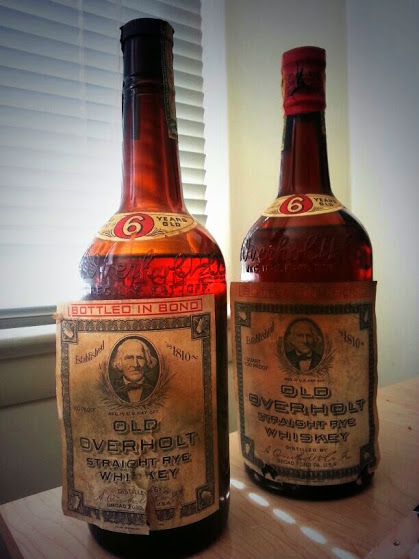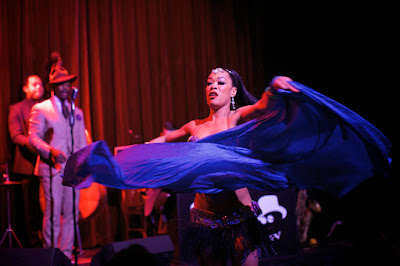It is a classic truism in the malt whisky world that single malts are "better than" blends. The usual reason given is that single malts are free of the "inferior" grain whisky. It's been popular in the whisky blogosphere to debunk this conclusion, usually by pointing to certain high-end blends and grain whiskies which are so good they stand up to any spirit. The point is valid: high-end grain and blended whisky can be as good as all but the most incredible single malts. However, the reputation of single malts as a category remains, and for good reason. Single malts have an extraordinarily wide gamut of flavors: from 'honey and heather', to 'richly sherried', to 'powerfully peated' and all sorts of distinctive flavors in between. Alternately sweet, or dry, or phenolic, grassy, smoky, floral, shy or huge, malt is a chameleon which is a terrific carrier for flavor factors such as malting method, wood management, and terroir. For many single malt enthusiasts, this wide gamut is the exactly the point. Where bourbon, rye, rum, and brandy can often win out on richness and intensity of their distinctive flavor signature, no spirit can hold a candle to malt for such kaleidoscopic variety.
Could you tell single malts from blends if you were tasting blind samples? Experience has taught me that it can be devilishly hard to identify what you're drinking when you aren't told anything up front.
(I did a double blind tasting of American and Canadian rye whiskies and failed to tell which was which. Then, there was the time that I mistook a rye for a Bourbon (see sample #1 in a Smoky Beast blind tasting). And, one time I actually won Dramming.com's first blind tasting competition - and I didn't get a single identification right, just attributes like ages and proofs.) Still - single malts and blends and single grains whiskies. You should be able to tell them apart, right?
 |
| Jennifer Lucille Wren (left) and Emily Ross-Johnson (right) at one of the USA tasting sessions involved in the research. |
Recently a piece of formal academic research came out which takes on this question and hopes to settle it empirically. The paper is called "
The perceptual categorisation of blended and single malt Scotch whiskies" by Barry Smith et.al and it was published in a journal called "
Flavor", put out by Biomed Central (sadly Flavor is due to cease publication after the next issue) - (DOI: 10.1186/s13411-017-0056-x).
http://flavourjournal.biomedcentral.com/articles/10.1186/s13411-017-0056-x
The paper notes that "
a firm distinction exists in the minds of consumers and in the marketing of Scotch between single malts and blended whiskies" but asks "
But does this category distinction correspond to a perceptual difference detectable by whisky drinkers?" In order to tell, expert and non-expert tasters in three different countries (UK, France, and the USA) were asked to apply standardized descriptors to the nose and palates to the following whiskies tasted blind
Four single malts Scotches:
- Cardhu 12
- Mortlach (Flora & Fauna 16 yo)
- Glenlivet 18
- Glenmorangie (10 - although erroneously stated as 12)
Four blended Scotches:
- Chivas Gold 18
- Ballantine's 17
- Johnnie Walker Black 12
- Johnnie Walker Platinum 18
and one grain whisky:
- Cameron Brig (6 years old)
The standardized descriptors allowed the researchers to compare results across 92 different tasters in the three different countries and to chart the results. Here are the charts for the results of nosing these whiskies by experts (top chart) and non-experts (bottom chart) for example. Single malts are in blue, blends are in black, and the lone grain is in red. Single malts and blends are all mixed up - although I notice that the experts and the non-experts put a number of the whiskies in the same general areas (although not the grain - which veers drunkenly).
I had the pleasure of sitting on one of the tasting panels, along with some very distinguished members of the New York whisky community at that time (September 2014), including Matt Lurin, the man behind what is probably the best whisky event on the planet at the moment,
The Water of Life (more on this blog about that event very shortly - meanwhile click the link to buy tickets), Emily Ross-Johnson who, at the time, was the founder of the Astoria Whiskey Society (now she is the founder of the
Portland Whiskey Society - and you should join if you're out there - click the live link), Jennifer Lucille Wren, a whisky blogger and event organizer then, who is now the West Coast brand ambassador for Glenfiddich, and Susanna Skiver Barton, whisky blogger, journalist, and now manager of the Whisky Advocate's web presence. The experience of participating in the tasting gives me a personal perspective on how this study operated because I was there.
 |
| Lead author, Barry Smith, explains the tasting procedure to Matt Lurin (left) and Jennifer Wren (right) |
 |
| Susanna Skiver Barton (left) and Josh Feldman (the author of this post) at one of Smith et al.'s NY tastings. The blind samples in the study are before us. Photo by Emily Ross-Johnson (thanks) |
Smith et. al.'s conclusion is that people can't taste the difference between single malts and blends:
"The present study shows that the distinction between blends and single malts, which is central to the production, presentation and marketing of Scotch whisky, does not correspond to a clear cut perceptual distinction for tasters."
Barry Smith and his colleagues have structured an empirical blind study with a good methodology - so have they settled this topic? In my opinion,
absolutely not. The problem has to do with the types of single malts and blends they selected for the study. All of the single malts selected - with the sole exception of Mortloch, fall squarely in the "honey and heather" flavor profile, and that's exactly true of the blends selected too. This isn't representative of those overall segments. When you walk into a liquor store and peruse the blended Scotch, many of the options are considerably lighter and less distinguished than Johnnie Walker Platinum 18, Chivas Gold 18, or Ballantine's 17 - or even Johnnie Walker Black 12. The likes of J&B, Johnnie Walker Red, Passport, 100 Pipers, Bell's, Clan McGreggor, Dewar's White Label etc... are far more grainy and less honeyed and floral than the unabashedly high-end blends in the study. Conversely, many single malt enthusiasts will often opt for single malts well outside the "home plate" honey and heather flavor profile - going for sherry bombs like Glendronach, Aberlour, or Macallan, or peat monsters like Laphroaig, Ardbeg or Lagavulin, or dozens of different interesting variants (the rubber of Ledaig, the pheolic Strathspey, the salt and honey of Old Pultney, Springbank's fungal notes... etc...) rather than the gentle likes of Cardhu, Glenlivet, and the base Glenmorangie. These single malts, delicious as they are, tend to be close to the center of the "honey and heather" "Highland" flavor profile that is exactly what the blenders at Diageo and Pernod Ricard are aiming for.
To some extent, there is no way to structure a piece of scientific research which adequately captures this broad flavor gamut - precisely because it would be so easy to pick them out blind which would muddy the central question of whether something specific about single malts versus blends is objectively detectable. It's clear that the designers of this study selected whiskies for the blind tasting deliberately to have a very similar flavor profile with the specific aim of trying to see if tasters could identify the
sole distinction with flavor signature held constant as much as possible. And, in that aim they have succeeded. I couldn't tell the difference. The preponderance of the other tasters couldn't either. And I bet you couldn't reliably tell the difference blind with this set of drams either. But, I argue that these selections don't represent the nature of blended Scotch whiskies and single malt whiskies generally. Looking at the segments as a whole, you and I would be far more likely to be able to pick out blends versus single malts when the full gamut of flavors is in the mix. Select J&B and Bells as the examples of blends, and Laphroaig 10 and Glendronach 15 as the single malts, for example, and then taste those blind. I bet I could pick the single malts and blends in that example that every time and you probably could too. It's those real perceptual differences that gave rise to the generalizations that aren't always true - but are true often enough to make them commonly held - which is why whisky bloggers are still writing pieces about how good blends can make you question those assumptions.
So where does that leave us? Is there some Platonic ideal of "single maltness" which can be differentiated from "blendness"? No. Barry Smith et. al. have scientifically proved that,
when flavor signature is held relatively constant, tasters cannot distinguish between single malts and blends. My complaint is that they left that qualifying clause out of the language of their published conclusion, and I find that omission misleading. It implies, to someone not carefully reading, that all this whisky epicureanism is some kind of snobby mirage and that no one can really taste the difference between the carefully crafted and inexpensive bulk stuff. That isn't the case at all - and it's not what Barry Smith et. al. meant to imply either. But they left the door wide open to that misinterpretation. In social media where many people will only read the headline, that incorrect message will be the one that people will learn most from this study. In the real world, you can actually taste the difference between many many single malts and many many blends all day long.


 Distilled prior to September 8th, 1917 at The Stewart Distillery. Two stories in one because the bottle is labeled one way, but contains a different whiskey. This kind of thing was common in Prohibition when brands were consolidated into a few companies who had medicinal whiskey licenses to sell to pharmacies. Actual whiskey was taken from closed distilleries and stored together in a smaller number of more defensible concentration warehouses and brands and spirits were often conflated as expediency demanded. In this case we have Lewis Rosensteil's Schenley operation - which would become the second largest liquor company in the United States (second only to American Medicinal Sprits, which became National Distillers after Repeal). Rosensteil's concentration warehouse was at Schenley PA, RD No. 2 - and sure enough - the back label on this bottle says that whiskey from Stewart Distillery, Baltimore was "bottled for" Gibson Distilling Co. of Brownsville, PA (the heart of the Monongahela region), at Schenley's concentration warehouse.
Distilled prior to September 8th, 1917 at The Stewart Distillery. Two stories in one because the bottle is labeled one way, but contains a different whiskey. This kind of thing was common in Prohibition when brands were consolidated into a few companies who had medicinal whiskey licenses to sell to pharmacies. Actual whiskey was taken from closed distilleries and stored together in a smaller number of more defensible concentration warehouses and brands and spirits were often conflated as expediency demanded. In this case we have Lewis Rosensteil's Schenley operation - which would become the second largest liquor company in the United States (second only to American Medicinal Sprits, which became National Distillers after Repeal). Rosensteil's concentration warehouse was at Schenley PA, RD No. 2 - and sure enough - the back label on this bottle says that whiskey from Stewart Distillery, Baltimore was "bottled for" Gibson Distilling Co. of Brownsville, PA (the heart of the Monongahela region), at Schenley's concentration warehouse.



































